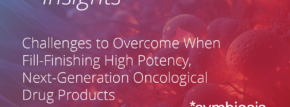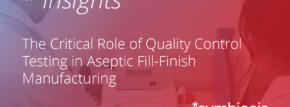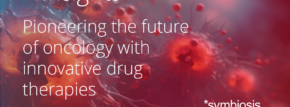1. Introduction – Please give us an overview of your role, experience and expertise.
I am the Business Development Manager for the USA region. During my undergraduate and postgraduate degrees I worked in a variety of laboratories and although I loved the scientific aspect I knew the lab setting wasn’t for me, after graduating with a MSc in Biotechnology and Innovation at the University of Wales Aberystwyth I immediately started work within account management and Business Development, 10 years later I haven’t looked back! My career has allowed me to work in technical sales on a global basis on a variety of exciting projects working for both large and small organisations.
2. What drives you to work the in the aseptic fill-finish market?
The clients we meet and the indications they serve are really my driving force. We are a very small but critical part of the overall drug development process but knowing that what I do can have a real impact on patients, especially those which focus on paediatric indications is a key driver for me.
3. What brought you to Symbiosis?
The ability to work globally with a specific focus on the USA, on a variety of modalities and indications. No day is the same.
4. What are your hopes and ambitions for the industry?
Some of the technologies in clinic at the moment have the potential to support a significant amount of patients globally. My hope for the industry is to build on an inherently collaborative nature to reduce the overall cost of commercialised products leading to expanded access for patients globally.
5. What are the key market trends we can expect to impact the market next year (e.g any new technology?)
The number of ATMPs being commercially approved by the FDA is predicted to significantly increase with many more coming into global pipeline. Within the orphan indication space there is a drive for alignment of regulatory approval process for clinical material between the FDA, EMA, PDMA and MHRA, this should allow access a larger pool of patients in a quicker timeframe.
6. What are the biggest challenges that aseptic fill-finish manufacturers must overcome in 2023?
Autologous therapies pose a challenge to any aseptic fill-finish manufacturer with a rigid business model. Flexibility and adaptability to the traditional multi-patient batch model will be key to supporting autologous therapies which are suitable for centralised manufacture.
7. Finally, if you could give any advice to potential clients, what would it be?
Begin with the end in mind. It may be enough to have a non MHRA or EMA licensed facility to provide your Phase 1 clinical material for a single geography study but most, if not all, indications do not discriminate based on geography and at late stage clinical and commercial stage the financial and time costs of tech transfer can really slow progress. My advice would be begin with commercialisation in mind and plan your supply chain accordingly with quality at the foundation.



